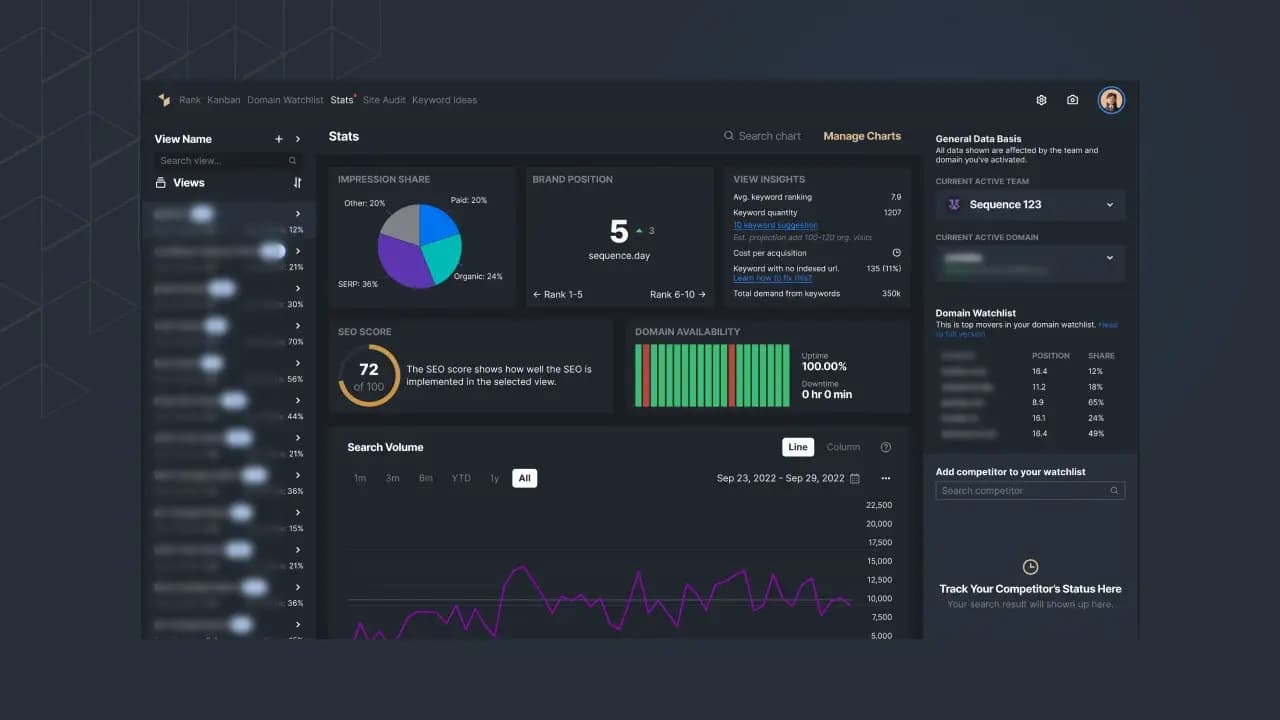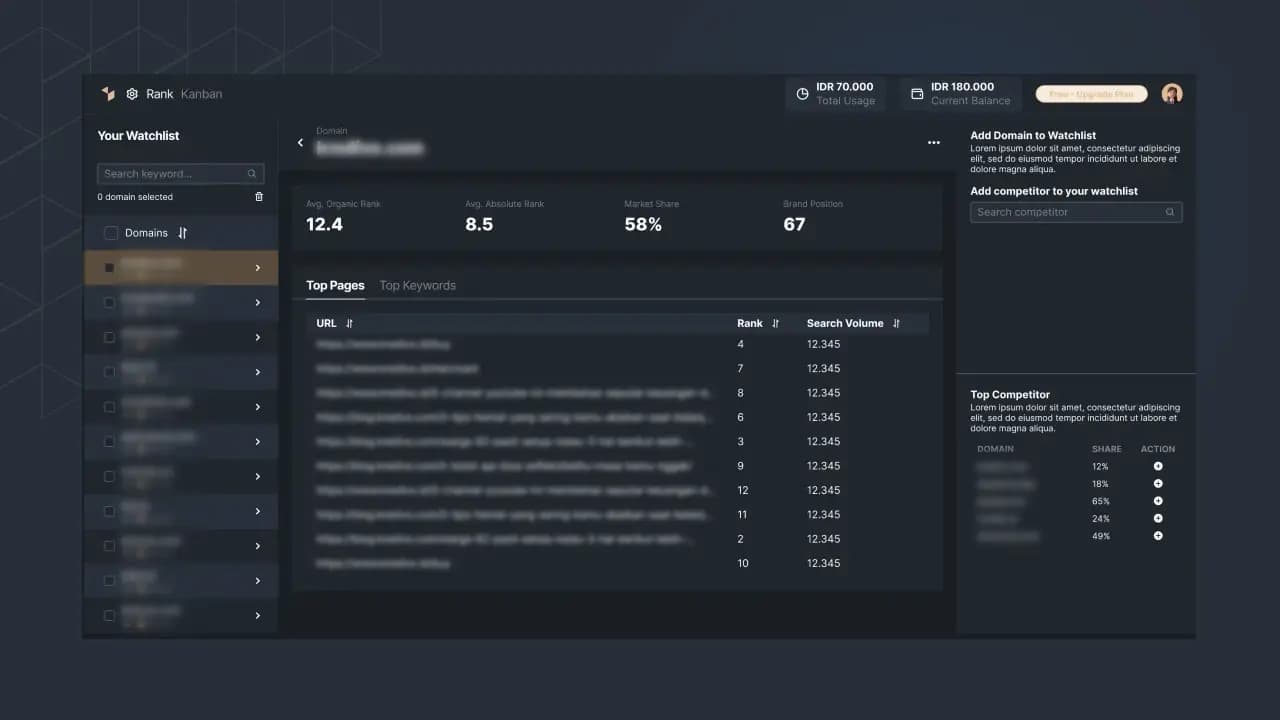In today's highly competitive business world, understanding your competitors is crucial for success. Not all competitors are created equal, and different competitors type require different strategies to remain competitive.
In this article, we will provide an overview of the different competitor types businesses should be aware of and how to monitor them effectively.
Competitor Types
Competitors come in different shapes and sizes, and understanding the various types of competitors is crucial for any business to stay competitive. Here are the competitor types you might want to know.

Picture 1: Illustration of competitor types in the market
Direct Competitors
Direct competitors are businesses that offer similar products or services to your business, targeting the same customers.
For example, Burger King and McDonald's are direct competitors in the fast-food industry, offering similar menu items and targeting similar customer demographics. Direct competitors often use similar marketing strategies and compete for the same market share.
Indirect Competitors
Indirect competitors are businesses that offer similar products or services but are not in direct competition with your business, as they target a different customer base.
For instance, a high-end restaurant and a fast-food restaurant both offer food, but they target different customer demographics. Indirect competitors may also compete for resources, such as labor and raw materials.
Substitute Competitor
Substitute competitors are businesses that offer products or services that can replace or fulfill the same need as your business.
For example, bottled water can be a substitute for soda in quenching thirst. Substitute competitors may also offer products or services that are cheaper or more convenient for customers, which can threaten your market share.
By understanding the different competitor types and their characteristics, businesses can develop effective strategies to remain competitive in their respective industries
Finding Your Competitors
After knowing the competitor types, Identifying your competitors is the first step towards developing effective strategies to compete with them. Here are some actions you can take
Analyze Search Result
One of the easiest ways to find your competitors is to analyze search results. Simply searching for the keywords related to your business on search engines such as Google, Bing, or Yahoo can reveal a list of businesses that offer similar products or services to yours.
These businesses are likely to be your direct competitors, as they are targeting the same keywords and audience as you.
Analyzing search results can also help you identify your indirect and substitute competitors. For instance, if you own a pet store, searching for "pet supplies" might reveal not only other pet stores but also online marketplaces that sell pet supplies.
Do Market Research
Another effective method for finding your competitors is to conduct market research. Market research involves collecting and analyzing data about your industry, customers, and competitors. By analyzing market data, you can gain insights into the competitive landscape and identify your competitors.
Some methods for conducting market research include surveys, focus groups, or analyzing social media. Surveys and focus groups allow you to collect data directly from your target audience, while social media analysis can get you insight into what people saying about a certain niche.
Using SEO Tool
SEO tools can be powerful aids in identifying your competitors. These tools can help you analyze your website's search engine rankings, track your competitors' rankings, and identify keywords and phrases that your competitors are targeting.
For example, in Sequence Stats you can notice who is your direct and the search competitors (the competitors in the search results). You can check this in the Stats - Brand Position feature.

Picture 2: Brand Position in the Stats feature that lists search and direct competitors of the website.
This feature enables you to get the competitor list without needing to analyze them one by one. In addition, you should not monitor the SERP all the time to know who is the competitor that target the same keywords.
Knowing this information will let you know who are the competitors that potentially will outperform you.
Monitoring The Competitor
After knowing who are the competitors of your business, now it is time to monitor them. Monitoring your competitors can help you identify industry trends, stay updated on new products and services, and develop effective strategies for staying competitive.
Developing a Competitor Monitoring Strategy
The first step in effective competitor monitoring is to develop a monitoring strategy. This strategy should identify the key competitors you want to monitor, the data you want to collect, and the resources you will use to collect and analyze this data.
To determine the data you want to collect, ask yourself questions such as:
What products or services do my competitors offer?
How do their prices compare to mine?
What marketing channels do they use?
What is their online presence like?
Track Their Performance
If you've developed a monitoring strategy, the next step is to track your competitors' performance and changes. This can involve tracking their sales, market share, and brand position, as well as monitoring their top keywords and page.
You can use Sequence Stats to monitor your competitors' data through the Domain Watchlist feature. Here, you can get valuable data about your competitors and monitor their changes. Starting from their market share, brand position, and their top performing page and keywords.

Picture 3: Domain Watchlist feature in Sequence Stats
Besides that, you need to determine how often you will monitor your competitors. This may depend on factors such as the level of competition in your industry and the frequency of changes in your competitors' strategies.
Some businesses monitor their competitors on a daily basis, while others do so on a weekly or monthly basis. Whatever schedule you choose, make sure it's consistent and realistic.
Analyze Their Strategy
The last way to monitor your competitor types is by analyzing their strategies. This can involve analyzing their advertising campaigns, social media presence, and website content.
By analyzing your competitors' marketing strategies, you can gain insights into their target audience, messaging, and tactics. This information can help you develop effective marketing strategies and improve your own marketing efforts.
Conclusion
In conclusion, understanding the different competitor types is crucial for any business that wants to succeed in a competitive market. By identifying direct, indirect, and substitute competitors, businesses can develop effective strategies to stay ahead of the competition.
Additionally, monitoring these competitors on a regular basis is essential for staying up-to-date with changes in the market and adjusting business strategies. Use an SEO tool to help you conduct this task.
As we have shown you previously, Sequence Stats can be a solution to your competitor analysis for your business. It helps you get the data regularly and effortlessly. You can explore all the features by registering your account now. A free trial is available.